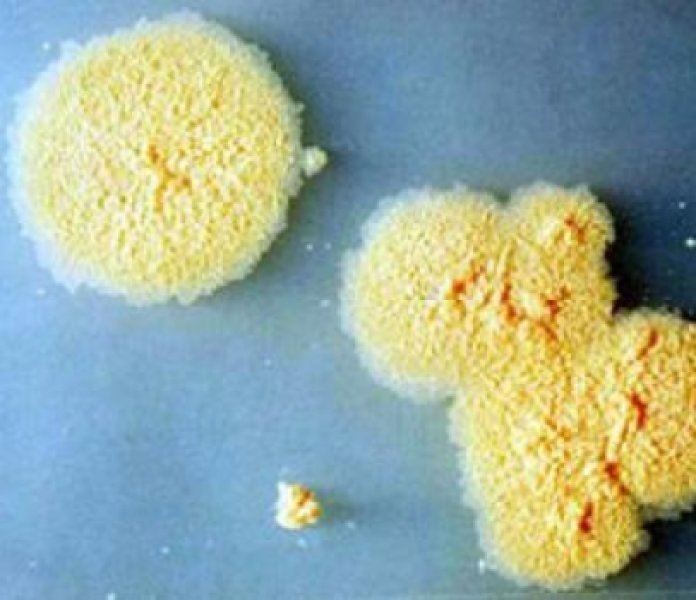Order Actinomycetales Family Mycobacteriaceae Rank Species | Phylum Actinobacteria Suborder Corynebacterineae Genus Mycobacterium Higher classification Mycobacterium | |
 | ||
Similar Mycobacterium, Bacteria, Mycobacterium phlei, Mycobacterium flavescens, Mycobacterium scrofulaceum | ||
Mycobacterium vaccae
Mycobacterium vaccae is a nonpathogenic species of the Mycobacteriaceae family of bacteria that lives naturally in soil. Its name originates from the Latin word, vacca (cow), since it was first cultured from cow dung in Austria. Research areas being pursued with regard to killed Mycobacterium vaccae vaccine include immunotherapy for allergic asthma, cancer, depression, leprosy, psoriasis, dermatitis, eczema and tuberculosis.
A research group at Henry Wellcome Laboratories for Integrative Neuroscience and Endocrinology, University of Bristol, Bristol, England, UK has shown that Mycobacterium vaccae stimulated a newly-discovered group of neurons, increased levels of serotonin and decreased levels of anxiety in mice. Other researchers fed live Mycobacterium vaccae to mice, then measured their ability to navigate a maze compared to control mice not fed the bacteria. "Mice that were fed live M. vaccae navigated the maze twice as fast and with less demonstrated anxiety behaviors as control mice", according to Dorothy Matthews, who conducted the research with Susan Jenks at the Sage Colleges, Troy, New York, USA.
Mycobacterium vaccae is in the same genus as Mycobacterium tuberculosis, the bacterium which causes tuberculosis. Numerous trials have indicated that exposure to oral and injectable products derived from M. vaccae bacteria can have positive effects in treating tuberculosis. Although a 2002 review of selected clinical trials failed to find any consistent benefit of certain dosage regimens of injectable Mycobacterium products in people with tuberculosis, a more recent meta-analysis of 54 clinical studies of M. vaccae products for tuberculosis showed treatment resulted in improved sputum conversion and radiological (X-ray) assessment.
Medical researchers at Kharkiv National Medical University, Kharkiv, Ukraine have reported two clinical trials with oral formulations of Immunitor Inc's killed Mycobacterium vaccae oral vaccine and An Hui Longcom's killed Mycobacterium vaccae oral vaccine in treating tuberculosis, including drug resistant TB (MDR-TB). The research team reported greater success with the Immunitor vaccine than the An Hui Longcom vaccine.
A team of researchers at the Genetics and Microbiology Department of the Autonomous University of Barcelona, Barcelona, Spain discovered that Mycobacterium vaccae changes from its "smooth" type to its "rough" type (referring to how colonies of this organism appear under a microscope) at thirty degrees Celsius. They discovered that the "smooth" type of Mycobacterium vaccae has a substance on the outside of its cell wall which interferes with the production of Th-1 cytokines, responsible for some kinds of T-helper cell immune response. The team also found that the spleen cells of mice inoculated with "rough" Mycobacterium vaccae produced more Th-1 cytokines than those inoculated with "smooth" Mycobacterium vaccae.
The researchers say this may explain why different vaccines made from Mycobacterium vaccae vary in their effectiveness in increasing immune response to other organisms during clinical trials.
